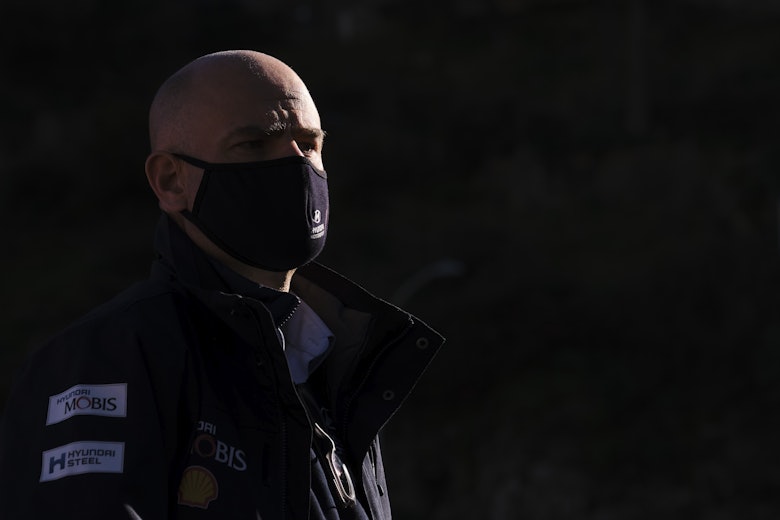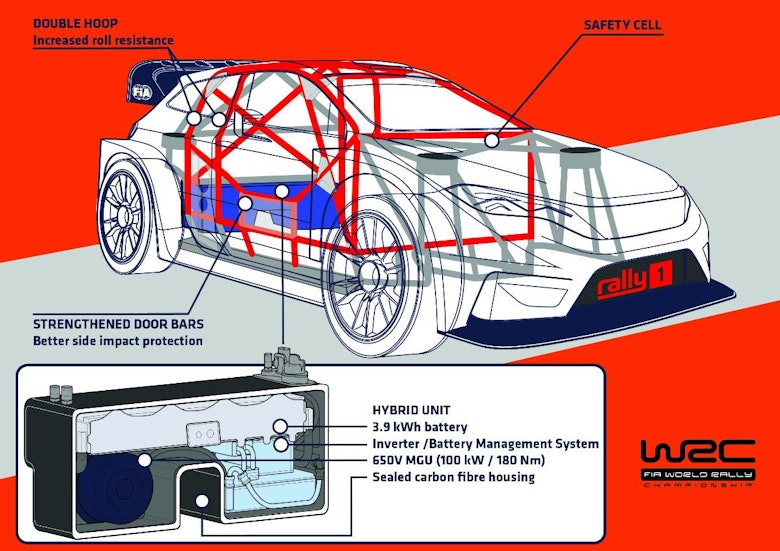The man who introduced Brad Pitt and Angelina Jolie to the World Rally Championship narrative has done good. Bravo Andrea Adamo. And welcome home.
Sabre-rattling or serious threat, we’ll never know exactly how close Hyundai Motorsport came to walking away from the WRC. There are plenty in the series’ inner sanctum who see Adamo as a game-player, a foot-stamper. They’re absolutely right. And they’d be enormously naive if they expected anything less.
The Italian is as passionate about the WRC as anybody I know, but his first and only priority is in delivering for his Korean paymasters. If Seoul says he must sing for his supper, Adamo’s first question is: “How loud?”
His first job? To get the WRC dancing to that tune.

He fully understands the need for a cohesive approach and the potential for delivering more value from a WRC pie made bigger by such policy pursuit, but he’s only going to add ingredients on his – and Hyundai’s – terms.
These are the commercial realities of professional sport, but they’re the very same qualities that bring some within the sport’s governing body to express their frustrations at the strength of manufacturer influence.
Again, a sensible perspective. We can bend rallying to fit with the carmakers demand, only for them to break their contract and walk away in the blink of an eye.
Admittedly under a radically different regime, but Hyundai has history in that department.
Yikes. That’s all gone a bit negative. Let’s get back to the point.
If we want to attract new manufacturers we need to be delivering on Yves Matton’s promise of a half-million Euro rally carDavid Evans
This column’s meant to be reflecting on the maintenance of the status quo for the next homologation cycle. In the current COVID-ravaged global economic climate, that’s very good news and a deal the FIA and WRC Promoter should be applauded for landing.
It’s worth noting that the agreement is three for three: three manufacturers for three years, adding to speculation that further regulation change – as previously discussed here on DirtFish by FIA rally director Yves Matton – could be coming for 2025.
That’s the future’s future, let’s just be happy to hold on to what we’ve got for the here and now.
And it’s going to be fascinating to see how the delivery of the hybrid era plays out.
As you will have read, there are ongoing issues with the initial testing roll out of the kit, but the teams still have time to pull this one around.

We do, however, have to look beyond hybrid. There’s an awful lot more to 2022 than the introduction of a battery, an electric motor and a bit of Rally1 rebranding.
In terms of tech, the cars will take a big step backwards with a semi-automatic gearbox and paddle shift being replaced by a five-speed sequential. Active center diffs are also out of favor and the aero will be considerably more inefficient by design.
Does any of that matter? To me, not a bit. It all makes perfect sense. If we want to attract new manufacturers we need to be delivering on Yves Matton’s promise of a half-million Euro rally car.
Are we still good for that? Depends who you ask.
There is a certain irony in me writing this column extolling the virtues of the onset of the WRC’s hybrid era… while staring at a hydrogen fuel cell powered by a solar panel creating emission-free electricity in the middle of a Saudi Arabian desert.





